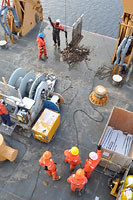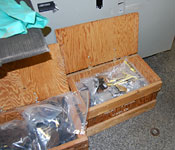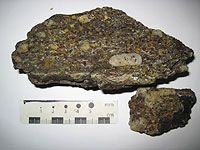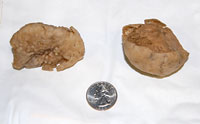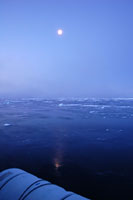

 | |||||||||||||||||||
|
|
Journals 2009/2010Jonathan Pazol
September 12, 2009 Yesterday's entry on safety drills was almost a little too timely for my taste. As we were waiting for one of our dredges to be emptied on the deck, an announcement came over the pipes that there was flooding in the bow thruster compartment. This was not a drill, but a real emergency. Consequently, we had to leave the fantail and muster in the Science Lounge - Mustang suits and all. Fortunately, there was only a little leaking around one of the shafts, and the problem was taken care of very quickly. Six months ago, if someone asked what I was going to do on a weekend night, I would have probably mentioned going to a movie, out to dinner, maybe going downtown, or even staying home. Never in my life would I have said, "At 1 am, I'm going to get dressed up in a Mustang safety suit and play with shovels, hoses, and rocks on the back of a heaving ship in the middle of the Arctic Ocean" - I guess you never know where life is going to take you. We did the last of the 5 dredges early this morning. This one was significant because it is possibly the only one ever from the Chukchi Cap. It was also almost entirely filled with rock, which made the geologists very happy.
Once the rocks are rinsed off and carried inside, it is time for the geologists to classify them. Each rock, or groups of rocks, needs to be preliminarily categorized, labeled, and then packed away. On this cruise, the rocks will either go with the geologists to Stanford, the University of Michigan, or to the USGS (US Geological Survey) for storage. Once back in their respective labs, the scientists will do further analysis for more specific identification and to help understand the geological history of the region.
I also got to play biologist again. We brought up several organisms that could either be sponges, sea cucumbers, or even tunicates - these last ones are actually invertebrate (no backbone) chordates, which are more closely related to humans than they are to the other invertebrates. We hope to take them back to BASC (Barrow Arctic Science Consortium), so that someone can do a more positive identification.
As we remain further south, the ice is getting more and sparser. It gets dark and actually stays dark for several hours, which means summer in the Arctic is coming to an end.
|
||||||||||||||||||
